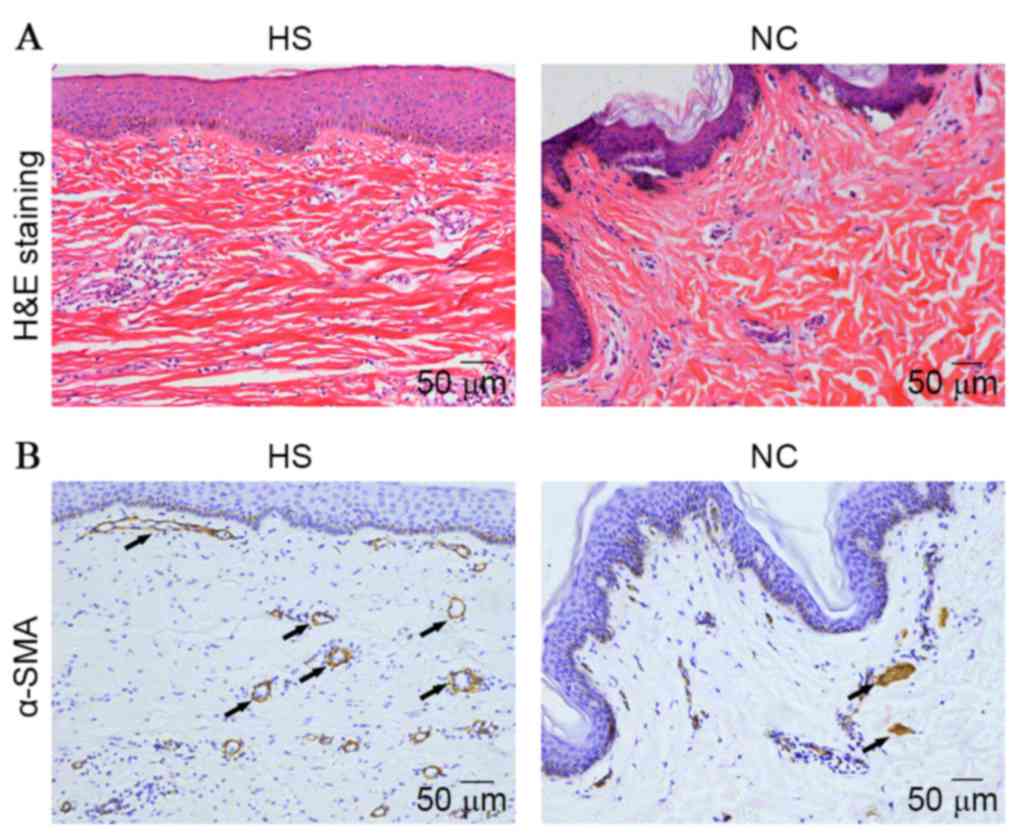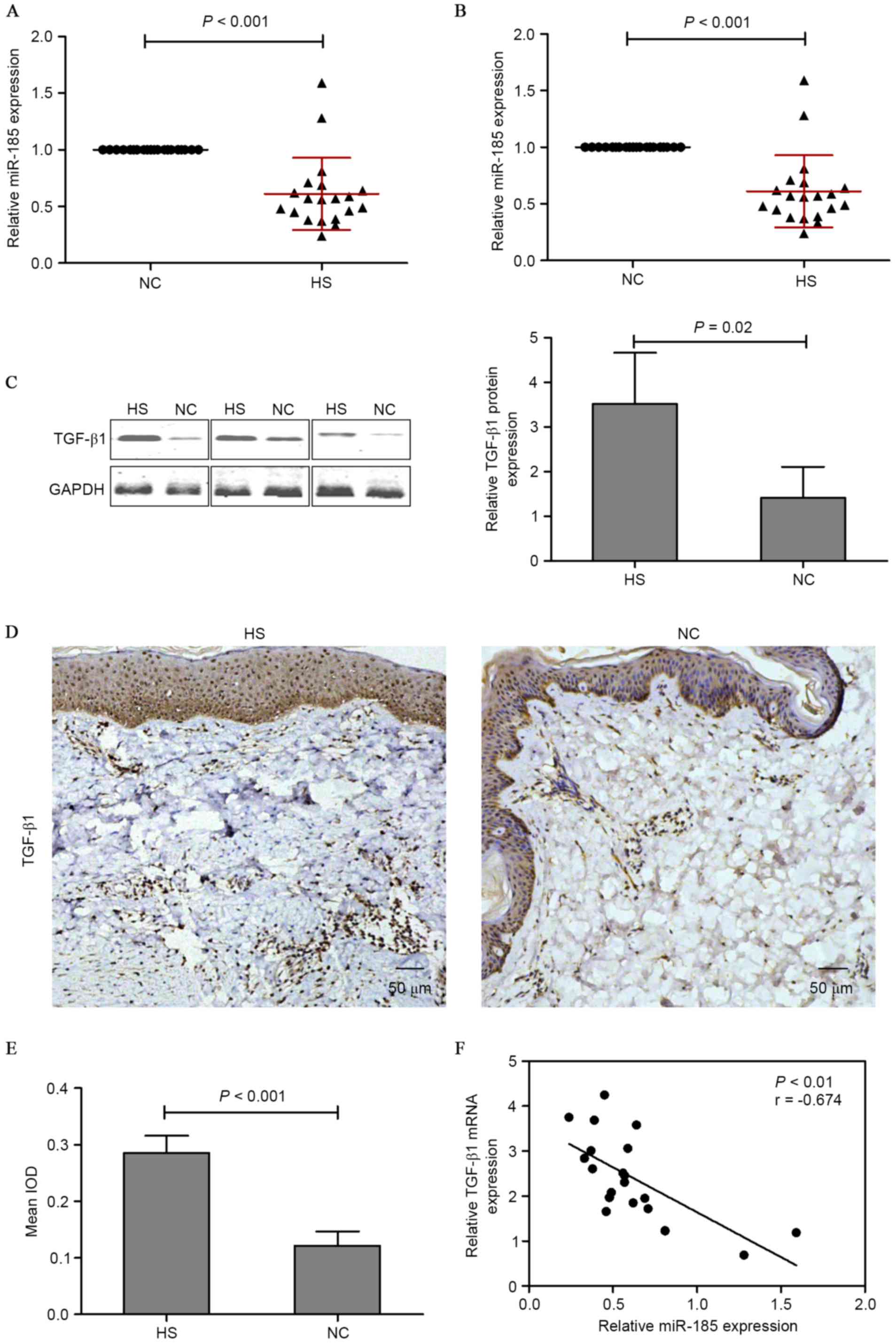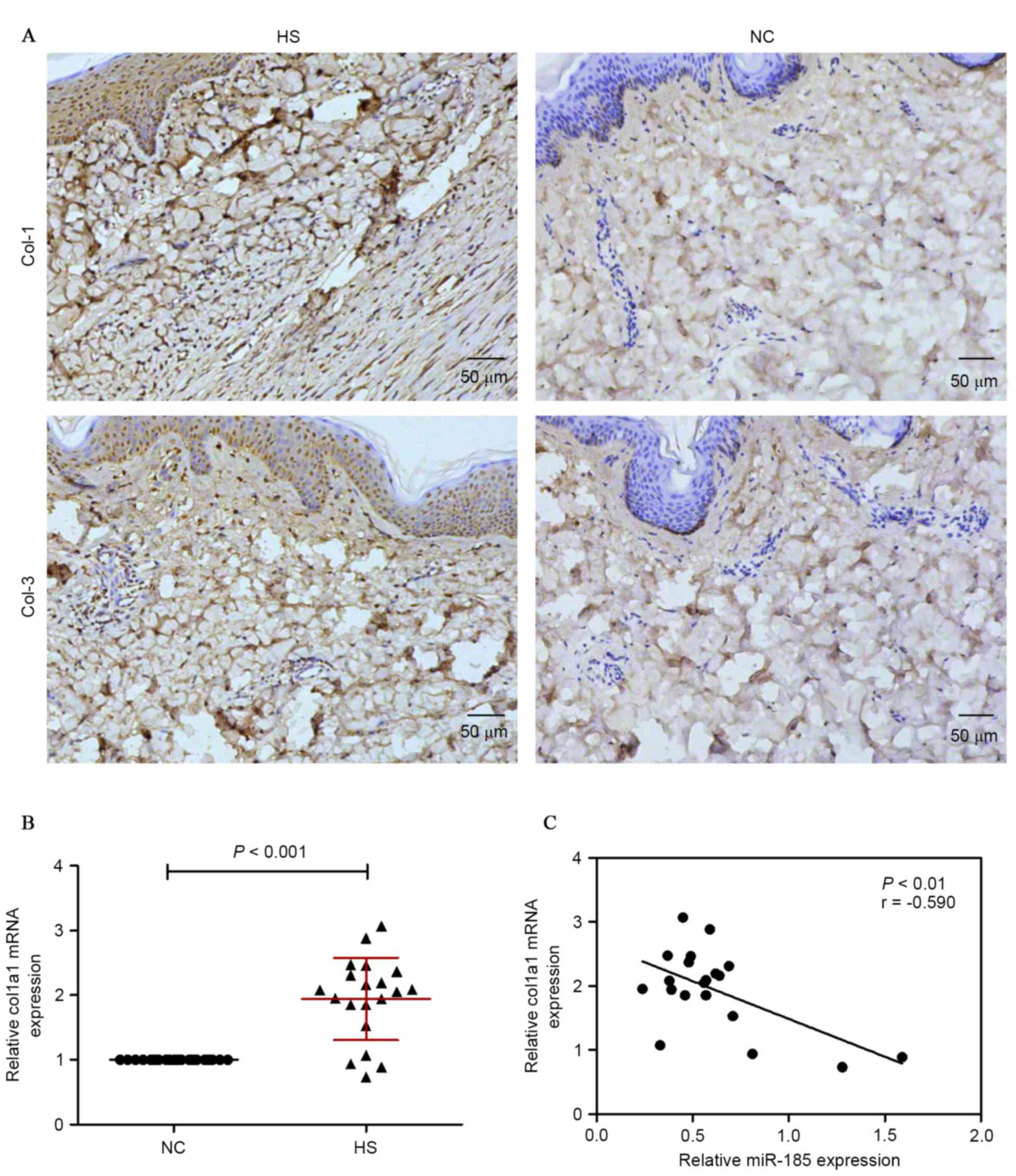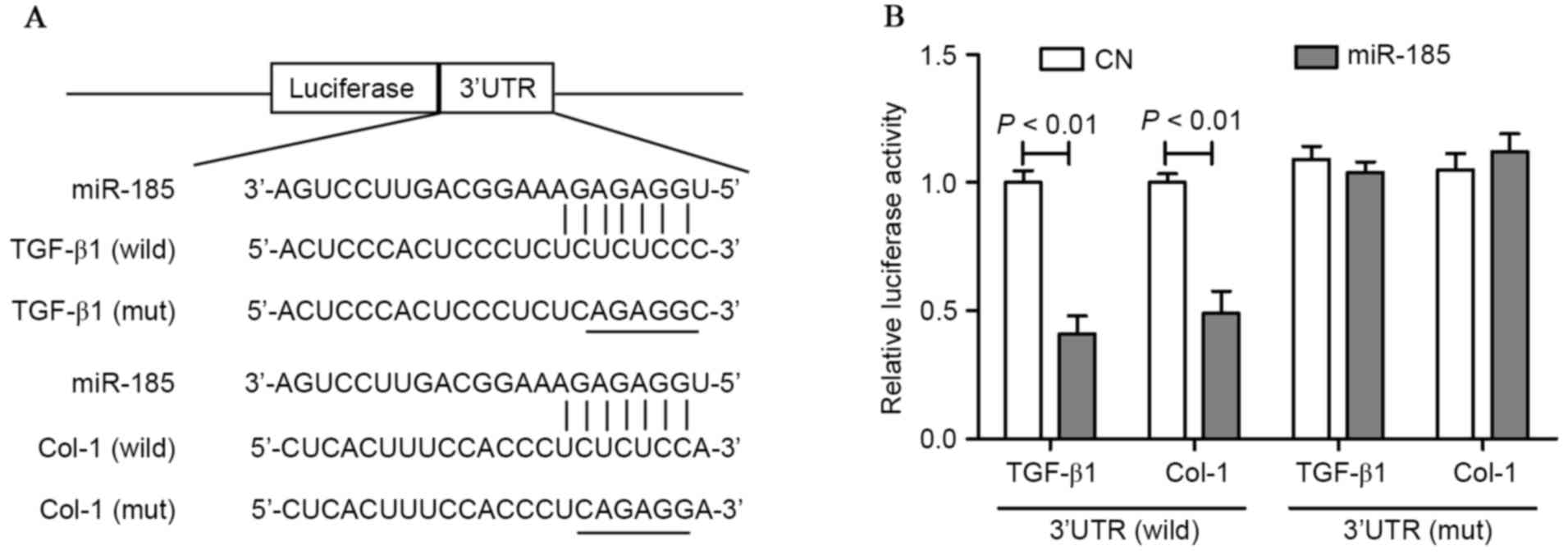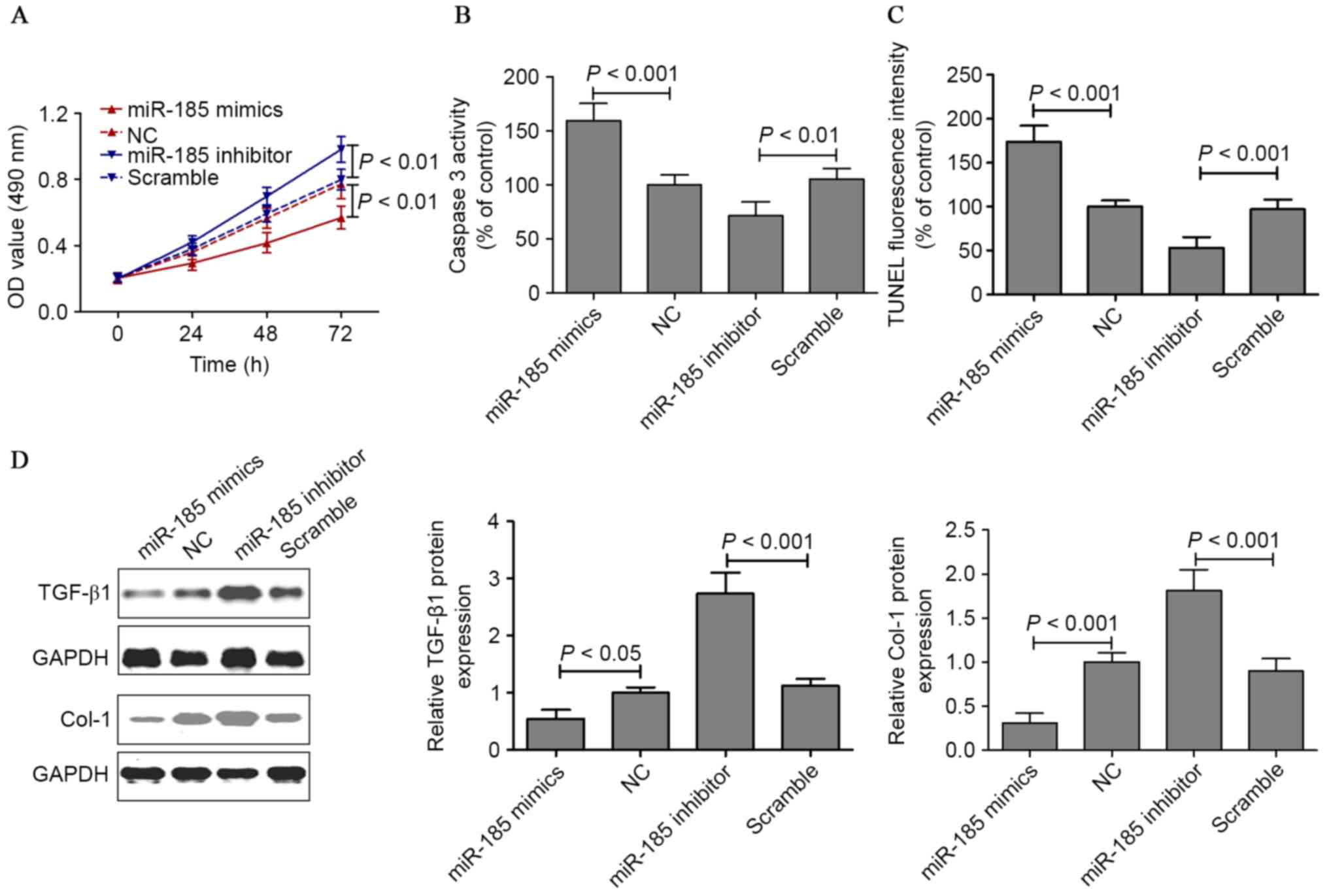|
1
|
Zhang H, Liu X, Liu Y, Wu Y, Li H, Zhao C,
Li H, Meng Q and Li W: Effect of hematoporphyrin monomethyl
ether-sonodynamic therapy (HMME-SDT) on hypertrophic scarring. PLoS
One. 9:e860032014. View Article : Google Scholar : PubMed/NCBI
|
|
2
|
Crawford J, Nygard K, Gan BS and O'Gorman
DB: Periostin induces fibroblast proliferation and myofibroblast
persistence in hypertrophic scarring. Exp Dermatol. 24:120–126.
2015. View Article : Google Scholar : PubMed/NCBI
|
|
3
|
Gras C, Ratuszny D, Hadamitzky C, Zhang H,
Blasczyk R and Figueiredo C: miR-145 contributes to hypertrophic
scarring of the skin by inducing myofibroblast activity. Mol Med.
21:296–304. 2015. View Article : Google Scholar : PubMed/NCBI
|
|
4
|
Kathju S, Gallo PH and Satish L: Scarless
integumentary wound healing in the mammalian fetus: Molecular basis
and therapeutic implications. Birth Defects Res C Embryo Today.
96:223–236. 2012. View Article : Google Scholar : PubMed/NCBI
|
|
5
|
Gauglitz GG, Korting HC, Pavicic T,
Ruzicka T and Jeschke MG: Hypertrophic scarring and keloids:
Pathomechanisms and current and emerging treatment strategies. Mol
Med. 17:113–125. 2011. View Article : Google Scholar : PubMed/NCBI
|
|
6
|
Niessen FB, Spauwen PH, Schalkwijk J and
Kon M: On the nature of hypertrophic scars and keloids: a review.
Plast Reconstr Surg. 104:1435–1458. 1999. View Article : Google Scholar : PubMed/NCBI
|
|
7
|
Nirodi CS, Devalaraja R, Nanney LB,
Arrindell S, Russell S, Trupin J and Richmond A: Chemokine and
chemokine receptor expression in keloid and normal fibroblasts.
Wound Repair Regen. 8:371–382. 2000. View Article : Google Scholar : PubMed/NCBI
|
|
8
|
Rahmani-Neishaboor E, Yau FM, Jalili R,
Kilani RT and Ghahary A: Improvement of hypertrophic scarring by
using topical anti-fibrogenic/anti-inflammatory factors in a rabbit
ear model. Wound Repair Regen. 18:401–408. 2010. View Article : Google Scholar : PubMed/NCBI
|
|
9
|
Fan C, Dong Y, Xie Y, Su Y, Zhang X,
Leavesley D and Upton Z: Shikonin reduces TGF-β1-induced collagen
production and contraction in hypertrophic scar-derived human skin
fibroblasts. Int J Mol Med. 36:985–991. 2015.PubMed/NCBI
|
|
10
|
Liu S, Jiang L, Li H, Shi H, Luo H, Zhang
Y, Yu C and Jin Y: Mesenchymal stem cells prevent hypertrophic scar
formation via inflammatory regulation when undergoing apoptosis. J
Invest Dermatol. 134:2648–2657. 2014. View Article : Google Scholar : PubMed/NCBI
|
|
11
|
Wang X, Chu J, Wen CJ, Fu SB, Qian YL, Wo
Y, Wang C and Wang DR: Functional characterization of TRAP1-like
protein involved in modulating fibrotic processes mediated by
TGF-β/Smad signaling in hypertrophic scar fibroblasts. Exp Cell
Res. 332:202–211. 2015. View Article : Google Scholar : PubMed/NCBI
|
|
12
|
Chen Z, Li W, Ning Y, Liu T, Shao J and
Wang Y: Ski diminishes TGF-β1-induced myofibroblast phenotype via
up-regulating Meox2 expression. Exp Mol Pathol. 97:542–549. 2014.
View Article : Google Scholar : PubMed/NCBI
|
|
13
|
Wu CS, Wu PH, Fang AH and Lan CC: FK506
inhibits the enhancing effects of transforming growth factor
(TGF)-β1 on collagen expression and TGF-β/Smad signalling in keloid
fibroblasts: Implication for new therapeutic approach. Br J
Dermatol. 167:532–541. 2012. View Article : Google Scholar : PubMed/NCBI
|
|
14
|
Tang H, Liu Q, Liu X, Ye F, Xie X, Xie X
and Wu M: Plasma miR-185 as a predictive biomarker for prognosis of
malignant glioma. J Cancer Res Ther. 11:630–634. 2015. View Article : Google Scholar : PubMed/NCBI
|
|
15
|
Jing R, Chen W, Wang H, Ju S, Cong H, Sun
B, Jin Q, Chu S, Xu L and Cui M: Plasma miR-185 is decreased in
patients with esophageal squamous cell carcinoma and might suppress
tumor migration and invasion by targeting RAGE. Am J Physiol
Gastrointest Liver Physiol. 309:G719–G729. 2015. View Article : Google Scholar : PubMed/NCBI
|
|
16
|
Kashiyama K, Mitsutake N, Matsuse M, Ogi
T, Saenko VA, Ujifuku K, Utani A, Hirano A and Yamashita S:
miR-196a downregulation increases the expression of type I and III
collagens in keloid fibroblasts. J Invest Dermatol. 132:1597–1604.
2012. View Article : Google Scholar : PubMed/NCBI
|
|
17
|
Livak KJ and Schmittgen TD: Analysis of
relative gene expression data using real-time quantitative PCR and
the 2(−Delta Delta C(T)) Method. Methods. 25:402–408. 2001.
View Article : Google Scholar : PubMed/NCBI
|
|
18
|
Takahashi Y, Forrest AR, Maeno E,
Hashimoto T, Daub CO and Yasuda J: MiR-107 and MiR-185 can induce
cell cycle arrest in human non small cell lung cancer cell lines.
PLoS One. 4:e66772009. View Article : Google Scholar : PubMed/NCBI
|
|
19
|
Li S, Ma Y, Hou X, Liu Y, Li K, Xu S and
Wang J: miR-185 acts as a tumor suppressor by targeting AKT1 in
non-small cell lung cancer cells. Int J Clin Exp Pathol.
8:11854–11862. 2015.PubMed/NCBI
|
|
20
|
Tang H, Liu P, Yang L and Xie X, Ye F, Wu
M, Liu X, Chen B, Zhang L and Xie X: miR-185 suppresses tumor
proliferation by directly targeting E2F6 and DNMT1 and indirectly
upregulating BRCA1 in triple-negative breast cancer. Mol Cancer
Ther. 13:3185–3197. 2014. View Article : Google Scholar : PubMed/NCBI
|
|
21
|
Qadir XV, Han C, Lu D, Zhang J and Wu T:
miR-185 inhibits hepatocellular carcinoma growth by targeting the
DNMT1/PTEN/Akt pathway. Am J Pathol. 184:2355–2364. 2014.
View Article : Google Scholar : PubMed/NCBI
|
|
22
|
Tan Z, Jiang H, Wu Y, Xie L, Dai W, Tang H
and Tang S: miR-185 is an independent prognosis factor and
suppresses tumor metastasis in gastric cancer. Mol Cell Biochem.
386:223–231. 2014. View Article : Google Scholar : PubMed/NCBI
|
|
23
|
Wang XC, Zhan XR, Li XY, Yu JJ and Liu XM:
MicroRNA-185 regulates expression of lipid metabolism genes and
improves insulin sensitivity in mice with non-alcoholic fatty liver
disease. World J Gastroenterol. 20:17914–17923. 2014.PubMed/NCBI
|
|
24
|
Yang W and Yee AJ: Versican
3′-untranslated region (3′UTR) promotes dermal wound repair and
fibroblast migration by regulating miRNA activity. Biochim Biophys
Acta. 1843:1373–1385. 2014. View Article : Google Scholar : PubMed/NCBI
|
|
25
|
Varga J and Abraham D: Systemic sclerosis:
A prototypic multisystem fibrotic disorder. J Clin Invest.
117:557–567. 2007. View
Article : Google Scholar : PubMed/NCBI
|
|
26
|
Madala SK, Edukulla R, Phatak M, Schmidt
S, Davidson C, Acciani TH, Korfhagen TR, Medvedovic M, Lecras TD,
Wagner K and Hardie WD: Dual targeting of MEK and PI3K pathways
attenuates established and progressive pulmonary fibrosis. PLoS
One. 9:e865362014. View Article : Google Scholar : PubMed/NCBI
|
|
27
|
Zheng L, Hui Q, Tang L, Zheng L, Jin Z, Yu
B, Wang Z, Lin P, Yu W, Li H, et al: TAT-mediated acidic fibroblast
growth factor delivery to the dermis improves wound healing of deep
skin tissue in rat. PLoS One. 10:e01352912015. View Article : Google Scholar : PubMed/NCBI
|
|
28
|
Goldberg MT, Han YP, Yan C, Shaw MC and
Garner WL: TNF-alpha suppresses alpha-smooth muscle actin
expression in human dermal fibroblasts: An implication for abnormal
wound healing. J Invest Dermatol. 127:2645–2655. 2007. View Article : Google Scholar : PubMed/NCBI
|
|
29
|
He T, Bai X, Yang L, Fan L, Li Y, Su L,
Gao J, Han S and Hu D: Loureirin B inhibits hypertrophic scar
formation via inhibition of the TGF-β1-ERK/JNK pathway. Cell
Physiol Biochem. 37:666–676. 2015. View Article : Google Scholar : PubMed/NCBI
|



